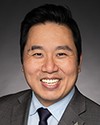Thank you, Mr. Chair. I think you'd agree we're making a fairly regular appearance with you which is, of course, a great pleasure.
I'm joined by a number of officials: Richard Wex, the associate deputy minister; Catrina Tapley; Tony Matson; Dawn Edlund; and David Manicom.
Together, we will try to answer your questions.
I'm very pleased to be here today to present Immigration, Refugees and Citizenship Canada's requests for additional expenditures under the Supplementary Estimates (A) for fiscal year 2016-17.
The expenditures set out in the supplementary estimates come to $188.2 million.
In my remarks I will focus on some of the most significant funding items or transfers that we need to help the department meet its goals. As you will see, the items are linked largely to the refugee initiative and to my department's 2016 annual levels plan that was tabled in Parliament this spring. These are the two items on your agenda today.
Preliminary results for 2015-16 show that IRCC spent $188.8 million. This is approximately $110.7 million less than planned. These cost savings or deferred spending are the result of good financial management and cost-effective decisions. Several factors lay behind the government's coming in under budget: lower than anticipated costs for transportation and overseas processing; unused contingency funds; and finally, the decision not to use interim refugee lodging sites. Those were largely the military bases that could have been called upon to use but were not needed.
Under supplementary estimates (A), we are requesting a funding increase of $39.4 million under operating expenditures in the effort to resettle additional government-sponsored Syrian refugees. This will enable us to meet our commitment to resettle 25,000 government-sponsored Syrian refugees by the end of 2016.
This will provide for 51 full-time staff to be used in processing of permanent resident applications overseas. The funding will help pay for our partners' support in facilitating processing, as well as for commercial flights to transport refugees to this country from overseas, as well as pre-departure services. The money will also pay for department staff to help manage settlement programs, helping resettle Syrian refugees at their final destinations.
Resettlement funding increases of $99.6 million under grants and contributions will also go toward activities including refugee income support to help them start their new lives here, and funding for third parties to support overseas pre-departure services. This also includes funding to help integrate Syrian refugees into Canadian communities by providing settlement services such as employment and language training.
These estimates also contain another item related to refugees. In order to intervene in refugee applications or appeals where there are concerns about fraud, credibility, or system integrity, these estimates seek to continue with the ministerial reviews and intervention pilot project. This request for an increase of $5 million under operating expenditures would carry the project for one more year, pending a review of the pilot's results and taking a decision on whether to make this pilot permanent.
The request continues funding for some 63 full-time equivalents. This would include staff in three reviews and interventions offices who would review both refugee claims and decisions on the basis of integrity and credibility.
Funding would also provide for staff at the department's national headquarters to provide performance measurement, quality assurance and functional guidance.
Let me now turn to the 2016 levels plan, which I understand will be the focus of the second hour of this meeting.
As I said in a previous appearance before you, the government is committed to a strong, generous, and welcoming country through the immigration system. We strive to open Canada's doors to those who want to contribute to our prosperity and diverse culture,
The recent levels plan called for Canada to welcome 300,000 new permanent resident immigrants in 2016. That's the point target. The range is 280,000 to 305,000, which is the highest number of projected immigrant admissions since World War I. More families will be reunited under this plan. Family class admissions are expected to increase to between 75,000 and 82,000. Refugee admissions will be between 41,000 and 46,000, almost quadruple the range for 2015.
At the same time, we haven't lost sight of the fact that immigration is critical to Canada's economic future. That's why economic immigration programs will continue to account for the majority of all immigration admissions.
As I say that, I must also note that the numbers in the economic class include family members of principal applicants, and that immigrants in all classes, including refugees and reunited family members, make meaningful contributions to our economy and to our communities.
In other words, all immigrants are, to one degree or another, economic immigrants. I'm pleased that we are on track to meet our processing targets this year.
Consistent with the priorities identified in my mandate letter from the Prime Minister, the levels plan calls for the reduction in backlogs and an improvement in processing times in multiple programs, especially family class. Under these supplementary estimates, an adjustment to operating expenditures requires a $20.9-million increase to reduce application processing times and achieve higher immigration admissions. This is in keeping with an objective set out in the 2016 immigration levels plan.
The funding would provide for 191 full-time equivalents. It would support many activities, such as reducing existing family class inventories, increasing family class intake, and streamlining our processing.
Under grants and contributions is an increase of $18.1 million, also dedicated to this year's levels, which would go toward settlement services such as language training, employment bridging, and facilitating access to settlement services.
Integration of immigrants is key, so my department will use the money for settlement services, such as language learning for newcomers and support services that bridge new immigrants' arrivals in their communities and in places of employment.
Looking forward, this summer we will be engaging with Canadians on the topic of immigration. Our consultations will help feed the policies that determine how many immigrants come to Canada and what their backgrounds might be. Of course, what we hear will be reflected in the next levels plan, which by the way will not be for just one additional year but for three additional years.
As I indicated earlier, these are just some of the highlights of the adjustments under Supplementary Estimates (A). Our government's vision to attract more newcomers to this country can be understood through the 2016 levels plan. It is reflected in these Supplementary Estimates request. We want to be clear that we are making family reunification a core priority.
We see immigration as a key to economic and social success. At the same time, we want to ensure Canada does not neglect its international standing as a beacon for refugees fleeing persecution.
With that, Mr. Chair, I will stop. My officials and I will be very happy to answer your questions.




